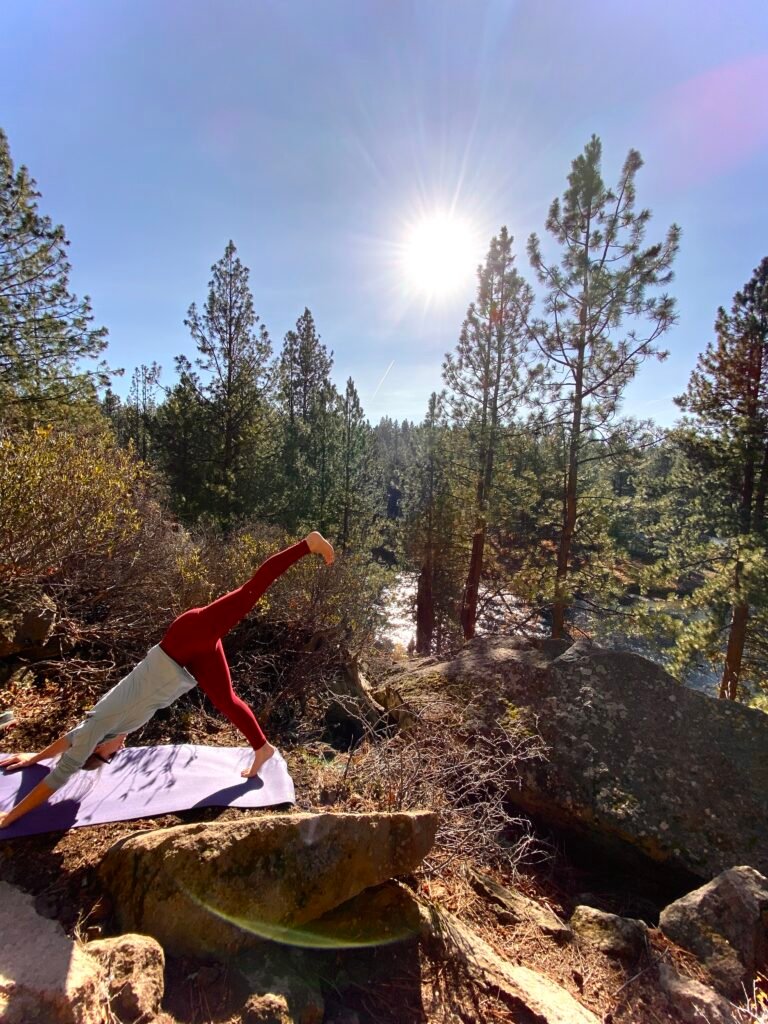Beary aware . . .
I am head-over-heels in love with Montana and everything that comes with Big Sky Country. But I’ll be honest, before being out in the wilderness first hand the bear aspect completely scared the s**t out of me. I was constantly paranoid that around every tree, rock, hill I’d run right into 600 pounds of teeth and fur. And while bear encounters are a real risk, I learned a lot about the reality of fear while overlanding in our canvas CVT tent for 10 days through the Montana wilderness.
Going from wide-eyed in fear, clutching the bear spray while trying to fall asleep, to sleeping deeply beneath the stars was no small feat. But let me tell you what I learned.
If you haven’t seen my post about our trip across Idaho, Montana and Wyoming in our pop-up CVT, click the button to read it now!
Lesson 1: Information is power. But only the right information.
If you’re like me, the worst case scenarios tend to stick in the forefront of my mind. Before we left, I was constantly Googling tips and tricks to survival, bear behavior, and camping with bears. This started off great, until I found myself spiraling through the stories of brutal bear attacks. Keep your searches focused on equipment, gear, and tips for safety and avoid reading about the bad stuff. It can really stick in your mind and is extra stress that you don’t need.
Lesson 2: Always carry bear spray, and/or a gun (in a place you can easily reach it at all times)
You read a lot of stories of people coming into contact with bears and their mace is hanging out uselessly in their backpack or car. Hang your bear spray on your body in a location you can easily grab. Though bear mace does not last long (typically 8 seconds) you should practice removing the safety cap and utilize a practice spray at least once so you are familiar with how you use it.
Lesson 3: Bear boxes/canisters are a must.
Being ill-prepared on our last trip, we made a stop in Jackson to pick up a bear box. A bear box is a container that is bear-proof, meaning they are unable to break into it. Bear boxes are very rarely smell-proof since bears have such impeccable noses. However, these boxes protect anything that might attract company. Throw everything that has a smell in one of these (including toothpaste, lip balm, coffee, deoderent, feminine products, mosquito repellant etc.) If you do not have access to a car, cook and leave the box at least 100 yards away from camp. Bears can recognize commercial food labels and colors, so remove any packaging before loading it up.
Lesson 4: Change your clothes after you cook.
After eating/cooking, make sure you change your clothes before climbing into your tent to sleep or if you are headed to hike. Fabric can hold on to smells which can attract unwanted attention. I put all dirty, used clothes into a dry bag, and not only did it consolidate our dirties, but it also kept the scent down.
Lesson 5: Make smart decisions about camp spots.
In places like Montana and Wyoming, the greatest concentration of bears is clearly mapped by the Montana Fish, Wildlife, & Parks, which you can reference to avoid “hot zones” that may be more populated with bears.
Lesson 6: Learn about bear behavior.
Differentiate Between Black Bears and Grizzlies:
- Black bears and grizzly bears have distinct behaviors. Black bears are often more timid and may flee when encountering humans. Grizzlies, on the other hand, can be more assertive, and it’s crucial to differentiate between the two species.
Recognize Signs of Aggression:
- Understanding bear body language is vital. Raised hackles, jaw popping, and woofing sounds can indicate stress or aggression. If a bear stands on its hind legs, it is likely trying to identify you and not necessarily preparing to attack.
Learn Defensive vs. Predatory Behavior:
- Bears may exhibit defensive behavior if they feel threatened, such as huffing, clacking teeth, or bluff charging. Predatory behavior is more rare but can include stalking. Knowing the difference helps in responding appropriately.
Know Bear Territories:
- Bears are territorial, and understanding their home ranges can help you anticipate potential encounters. Research local bear activity and recent sightings before entering an area.
Examples:
- Scenario 1: A black bear spotted in the distance may be observed calmly foraging for berries. In such cases, maintaining a safe distance and quietly enjoying the view is usually sufficient.
- Scenario 2: A grizzly bear with cubs may display defensive behavior if it perceives a threat. It’s crucial to back away slowly, avoiding any sudden movements or direct eye contact.
In conclusion. . .
In the heart of bear country, my camping journey evolved from apprehension to assurance. Through education, practical experiences, and the occasional bear-themed jest, I’ve transitioned from fearing the wild to feeling at home in it.
As I fold the pages of this instructional adventure, the once-dreaded pop-up tent stands resilient, a testament to newfound knowledge and confidence. Camping in bear territory can be a comfortable rendezvous with nature, blending safety measures with a profound understanding of our wild companions.
In the end, feeling safer in bear country is not just about mastering precautions but embracing the coexistence between humanity and the untamed. May this journey inspire others to camp with confidence, appreciating the wild as a classroom rather than a challenge.




